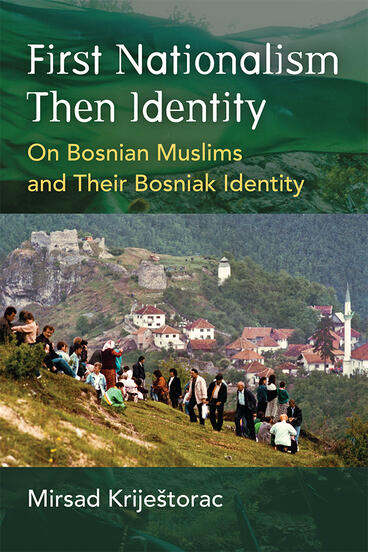First Nationalism Then Identity
On Bosnian Muslims and Their Bosniak Identity
Understanding the relationship between nationalism and identity, through a native European Muslim group
Description
First Nationalism Then Identity focuses on the case of Bosnian Muslims, a rare historic instance of a new nation emerging. Although for Bosnian Muslims the process of national emergence and the assertion of a new salient identity have been going on for over two decades, Mirsad Kriještorac is the first to explain the significance of the whole process and how the adoption of their new Bosniak identity occurred. He provides a historical overview of Yugoslav and Bosnian Slavic Muslims’ transformation into a full-fledged distinct and independent national group as well as addresses the important question in the field of nationalism studies about the relationship between and workings of nationalism and identity. While this book is noteworthy for ordinary readers interested in the case of Bosnian Muslims, it is an important contribution to the scholarly debate on the role of nationalism in the political life of a group and adds an interdisciplinary perspective to comparative politics scholarship by drawing from anthropology, history, geography, and sociology.
Mirsad Kriještorac is Assistant Professor of Political Science at Broward College.
Reviews
“Kriještorac’s rigorous empirical study of the development of a Bosniak identity extends the academic literature on nationalism, refines the history of Muslims in the Balkans, and adds to our knowledge of immigrant life in the United States. Kriještorac demonstrates the fruitfulness of studying change rather than permanence.”
- Thomas A. Breslin
—Thomas A. Breslin, Florida International University
“This book is a great source of information for anyone who wants to understand Bosnian-Herzegovian political dynamics and the aspirations of Bosniaks, as the largest national group there. As US ambassador to NATO involved in the effort to end the Bosnia War, I highly recommend this book for policymakers and others who are interested in the region. It effectively explains, normalizes, and situates Bosnian Muslim's national program. It describes their civic-leaning nationalism project and offers their vision of the survival and acceptance in the region, and the possibility of developing Bosnia-Herzegovina as a democratic state nation as opposed to a nation state.”
- Robert Hunter
—Robert E. Hunter, The American Academy of Diplomacy
“What is a Bosniak? In his magistral work, Mirsad Kriještorac explains the emergence of this new identity as an outcome of a nationalist project in the aftermath of the Yugoslav wars. Digging deeply into history, he takes the reader on a journey that disrupts stereotypes and offers a nuanced treatment of the changing relevance of language, territorial and religious attachments. An extensive survey provides complex evidence of the emergence of a Bosniak identity in the Bosnian diaspora in the US. This magistral work is likely to become an authoritative reference for understanding the history and nationalist politics of an important Muslim-majority country in Europe.”
- Elisabeth Prügl
—Elisabeth Prügl, Geneva Graduate Institute
“Nationalism is proactive, purposeful, political; identity is reactive, plural, personal. Where national identity comes from is a challenging question, especially in volatile settings. Finding answers depends on theoretically grounded case studies honoring causal complexity, multiple sources of evidence, methodical assessment. Bosniak identity offers an important case and makes this book an exemplary case study.”
- Nicholas Onuf
—Nicholas Onuf, Florida International University
“First Nationalism Then Identity makes a critical contribution to the scholarship on the intersections of nationalism and religion in Europe. By providing a breadth of interdisciplinary methods and drawing on original field research from the diaspora Bosnian community in the U.S., Kriještorac illustrates the historical, religious, and political contingencies that gave rise to the formation of a Bosniak national identity. This book offers a new lens for understanding the impact of nationalism on identity formation, thereby intervening in current debates in the field of comparative politics.”
- Hadia Mubarak
—Hadia Mubarak, Queens College of Arts & Sciences
“This book constitutes a significant contribution to our academic understanding of Bosnia, the Bosniaks, and the former Yugoslavia, and will be of interest to scholars and students of memory, nationhood, nationalism, and identity.”
- Marko Attila Hoare
—Marko Attila Hoare, Sarajevo School of Science and Technology
“This is a welcome academic study, which focuses on the important topic of nationalism among Bosniaks, provides a comprehensive historical account of the relevant developments, and presents an analysis of an original dataset.”
- Renat Shaykhutdinov
—Renat Shaykhutdinov, Florida Atlantic University

